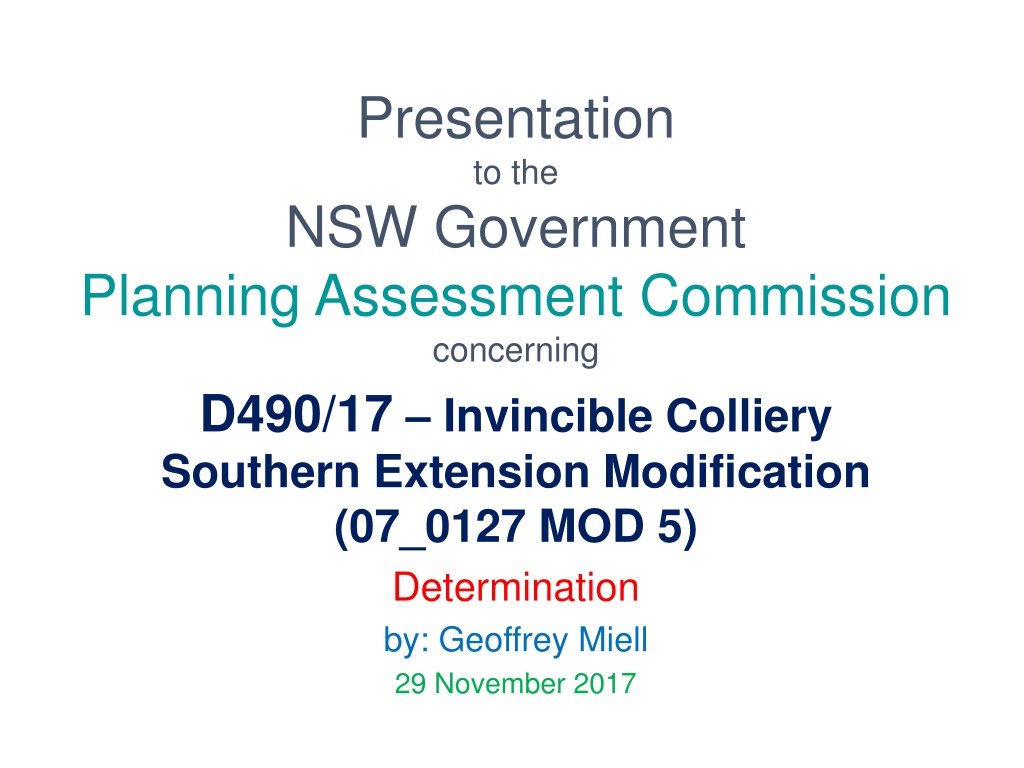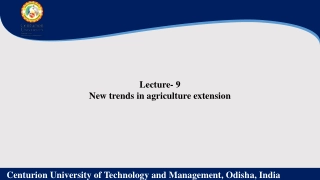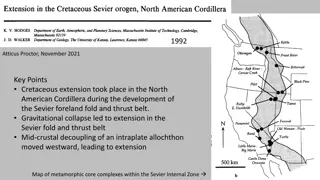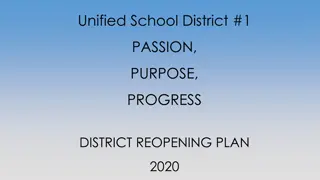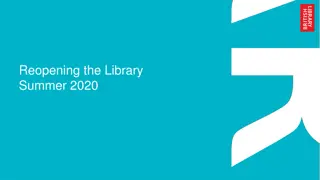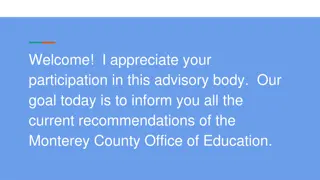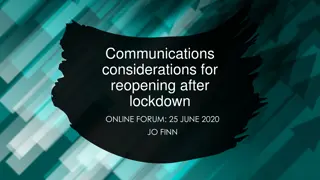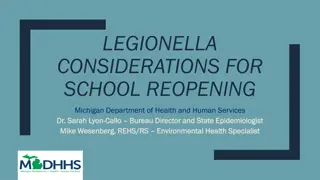Concerns Regarding the Reopening of Invincible Colliery Southern Extension
The presentation to the NSW Government Planning Assessment Commission outlines the proposed 8-year development plan for the Invincible Southern Extension MOD 5. Concerns include the environmental impact, quality of coal reserves, potential pollution levels, displacement of jobs, and inefficiencies compared to existing coal supply sources. The presenter questions the need for reopening Invincible mine when alternative sources are available, highlighting issues related to coal quality, water discharge, global emissions, and energy efficiency.
Download Presentation

Please find below an Image/Link to download the presentation.
The content on the website is provided AS IS for your information and personal use only. It may not be sold, licensed, or shared on other websites without obtaining consent from the author. Download presentation by click this link. If you encounter any issues during the download, it is possible that the publisher has removed the file from their server.
E N D
Presentation Transcript
Presentation to the NSW Government Planning Assessment Commission concerning D490/17 Invincible Colliery Southern Extension Modification (07_0127 MOD 5) Determination by: Geoffrey Miell 29 November 2017
Invincible Southern Extension MOD 5: Proposed 8-year development consent life 165 ha total existing disturbance new open cut 50 ha disturbance area 2.7 Mt ROM estimated total coal reserves from Irondale (upper), Lidsdale (middle) & Lithgow (lower 12 to 97m below natural ground surface) Seams, with 300 kt estimated of nut coal reserves (11% of total coal reserves) from the Lithgow Seam, or <3.6 years of nut coal reserves at 85 ktpa supply rate 1.2 Mtpa maximum extraction rate reserves exhausted in 2 years at max. rate 35 maximum full-time equivalent employees Operating from 7:00am to 10:00pm, Monday to Saturday (excluding public holidays) Blasting between 9:00am to 5:00pm, Monday to Saturday, 2 blasts per day, or 5 blasts per week Road transport between 7:00am to 9:30pm, Mon to Sat, 146 laden coal truck movements from site per day (averaged over a week), 16 coal trucks per hour Nearest residence <820m, Cullen Bullen Township at 3km radius dust/noise impacts Estimated 2,121-megalitres of mine water discharged into Cullen Creek in first year of operation significant potential for adverse toxicological effects (high Ni & Zn) Irondale and Lidsdale Seams with up to 30% ash content likely not suitable for export unless extensively blended Mt Piper Power Station is only likely potential consumer Mt Piper Power Station will be less carbon and energy efficient Geoffrey Miell - NSW PAC D490/17 Invincible Southern Extension (07_0127 MOD 5) 29 Nov 2017 2
Why bother reopening Invincible mine? Existing 85 ktpa nut coal supply already available elsewhere: Majority of existing supply from Clarence Underground Coal Mine (east of Lithgow) via road development consent expires on 31 December 2026 9 years away more than the life of the Invincible proposal Some supply sourced from Whitehaven s operations (Gunnedah Basin) via road Ashton can supply nut coal via rail only. Shoalhaven Starches Plant has on-site rail access, but not an unloader facility for coal carried by rail perhaps they should build one, instead of reopening Invincible, and get trucks off our roads? 89% of the 2.7 Mt ROM estimated thermal coal reserves have up to 30% ash content who will buy this poor quality coal? If Mt Piper Power Station consumes this coal it will be less carbon and energy efficient. Springvale Mine is currently sole supplier to Mt Piper. Will Invincible displace jobs elsewhere? An estimated 2,121-megalitres is likely to be discharged in the first year of operation more pollution. If it is good enough for Springvale Mine to have a water treatment plant, why isn t it good enough for Invincible to do so? Proponent claims this project will contribute approximately 0.000046% to global emissions per annum. It s still a tragedy of the commons . High Energy Return on Investment (EROI) petroleum and coal are being consumed to produce low EROI ethanol biofuels not environmentally friendly, and worsens GHG emissions. Geoffrey Miell - NSW PAC D490/17 Invincible Southern Extension (07_0127 MOD 5) 29 Nov 2017 3
2016 top 5 coal country rankings (all coal, both black and brown) All Coal in year 2016 Rank 1 Country Rank 2 Country Rank 3 Country Rank 4 Country Rank 5 Country Reserves (proved) (Mtonnes) (% world share) R/P (years) USA 251 582 22.1 381 China 244 010 21.4 72 Russian Fed. 160 364 14.1 417 Australia 144 818 12.7 294 India 94 769 8.3 137 Production (Mtoe) (% world share) China 1 685.7 46.1 USA 364.8 10.0 Australia 299.3 8.2 India 288.5 7.9 Indonesia 255.7 7.0 Consumption (Mtoe) (% world share) China 1 887.6 50.6 India 411.9 11.0 USA 358.4 9.6 Japan 119.9 3.2 Russian Fed. 87.3 2.3 Top 5 countries held: 78.6% share of Reserves; 79.2% share of Production; 76.7% share of Consumption. Mtoe = million tonnes R/P = Reserves-to-production at year-end-2016.Source: BP Statistical Review of World Energy 2017, pp36, 38-39 oil equivalent = 41.87 petajoules (IEA); Geoffrey Miell - NSW PAC D490/17 Invincible Southern Extension (07_0127 MOD 5) 29 Nov 2017 4
Looks like global coal production & demand have peaked and are now declining steeply World coal production fell by 6.2%, 231 Mtoe in 2016, the largest decline on record.China s production fell by 7.9% or 140 Mtoe also a record decline while the US production fell by 19% or 85 Mtoe. Global coal consumption fell by 1.7%, the second successive decline. The largest decreases were seen in the US (-33 Mtoe, -8.8%), China (-26 Mtoe, -1.6%) and the UK (-12 Mtoe, -52.5%). Source: BP Statistical Review of World Energy 2017, p40 Geoffrey Miell - NSW PAC D490/17 Invincible Southern Extension (07_0127 MOD 5) 29 Nov 2017 5
Current top 5 coal producer outlooks: China: peaked at an all-time high in 2013 at 1894.6 Mtoe, declined 11.0% to 1685.7 Mtoe in 2016, and is expected to decline substantially further in the next few years. China s coal-fired electricity generation capacity utilisation rate fell to a record low 47.5% in 2016. China is on a rapid diversification of its entire electricity-generating capacity away from coal towards hydro, renewables and nuclear. At the start of this year 100 GW of new coal-fired plants were cancelled. USA: peaked at an all-time high in 2008 at 596.7 Mtoe, declined 38.9% to 364.8 Mtoe in 2016, and is expected to decline a further 15 20% by around 2020. Utilities have plans to close 40 coal plants by 2022; 6 have been announced since Trump s election victory. Beset by stagnant power demand, and presented with cheaper alternatives like natural gas and wind, there s little incentive to build new coal-fired generation. And there have been massive write-downs on coal mine assets. Peabody Energy was at US$18 billion market capitalisation at the start of this decade, and they went to zero, along with 4 of the other biggest US coal companies recently. India: increased 14.3% from 252.4 Mtoe in 2010 to 288.5 Mtoe in 2016, but a draft national electricity plan announced in December 2016 indicates there s no need to build a single new coal- fired plant in the 2020s. 2 years ago, Indian energy minister Goyal articulated a clear plan to cease thermal coal imports by around 2020. Australia: with China and India likely to cease all thermal coal imports by around 2020, which combined represents approximately 40% of the current global seaborne thermal coal market, this market will be in total structural decline, highly likely to severely reduce Australia s exports. Why reopen another coal mine with this outlook? Indonesia:Peaked at an all-time high in 2015 at 272.0 Mtoe, declining 6.0% to 255.7 Mtoe in 2016. Declining seaborne thermal coal market is likely to reduce exports. Source: BP Statistical Review of World Energy 2017; Testimony by Tim Buckley representing IEEFA at the Australian Senate inquiry into the Retirement of coal-fired power stations public hearing in Sydney on 22 Feb 2017 1. 2. 3. 4. 5. Geoffrey Miell - NSW PAC D490/17 Invincible Southern Extension (07_0127 MOD 5) 29 Nov 2017 6
Australias ageing coal-fired power stations Operational power station (>140 MW capacity) Announced year of retirement Primary fuel type Year of Age (years) Capacity (MW) State commissioning NSW NSW NSW NSW NSW VIC VIC VIC QLD QLD QLD QLD QLD QLD QLD QLD WA WA WA WA Eraring Bayswater Liddell Mt Piper Vales Point B Loy Yang A Yallourn W Loy Yang B Gladstone Stanwell Tarong Millmerran Callide C Kogan Creek Callide B Tarong North Muja Collie Bluewaters 1 Bluewaters 2 Black coal Black coal Black coal Black coal Black coal Brown coal Brown coal Brown coal Black coal Black coal Black coal Black coal Black coal Black coal Black coal Black coal Black coal Black coal Black coal Black coal 1982-84 1982-84 1971-73 1993 1978 1984-87 1975, 1982 1993-96 1976-82 1993-96 1984-86 2002 2001 2007 1989 2002 1981, 1986 1999 2009 2010 33-35 33-35 44-46 24 39 30-33 35-42 21-24 35-41 21-24 31-33 15 16 10 28 15 31-36 18 8 7 2880.0 2640.0 2000.0 1400.0 1320.0 2210.0 1480.0 1026.0 1680.0 1460.0 1400.0 851.0 810.0 750.0 700.0 443.0 1070.0 340.0 208.0 208.0 2035 2022 2048 Red: 40+ years old Purple: 30-39 years Orange: coal supply 2024? Source: Aust. Senate inquiry into the Retirement of coal-fired power stationsFinal Report, March 2017 Geoffrey Miell - NSW PAC D490/17 Invincible Southern Extension (07_0127 MOD 5) 29 Nov 2017 7
New coal-fired generation is unlikely to be built new renewable energy solutions are now cheaper In August, the South Australian Government announced it had contracted the US company SolarReserve, to build a 150 MW concentrated solar thermal generator with 8 hours of energy storage, to deliver power at just $78/MWh, to be built by 2020. Source: Independent Review into the Future Security of the National Electricity Market: Blueprint for the Future, June 2017, Dr Alan Finkel et. al., Figure A.1: Levelised cost of Electricity Geoffrey Miell - NSW PAC D490/17 Invincible Southern Extension (07_0127 MOD 5) 29 Nov 2017 8
Adani Carmichael Mine in northern Qld will likely displace jobs elsewhere in Australia Source: http://www.abc.net.au/news/2017-07-06/galilee-basin-mining-project-will-reduce-coal-output:-research/8682164 Similarly, the Invincible proposal may displace jobs elsewhere, albeit on a smaller scale. Geoffrey Miell - NSW PAC D490/17 Invincible Southern Extension (07_0127 MOD 5) 29 Nov 2017 9
Estimated economic impact of Climate Change on The World GDP per capita Graphic Source: http://web.stanford.edu/~mburke/climate/map.php If the Invincible proposal proceeds, it will likely contribute to this outcome, however small. Many small GHG emission contributions all add up to a large overall effect. Why risk our civilisation s future for an apparent illusory, short-term gain? Geoffrey Miell - NSW PAC D490/17 Invincible Southern Extension (07_0127 MOD 5) 29 Nov 2017 10
There aint such a thing as a free lunch Minimum EROI for Conventional Sweet Crude Oil Activity Minimum EROI Required 14 : 1 12 : 1 9 or 10 : 1 7 or 8 : 1 5 : 1 3 : 1 1.2 : 1 1.1 : 1 Arts, Sports, Leisure, etc. Health Care Education Support Workers Families Grow Food Transportation Refine Energy Extract Energy To get usable energy we must first spend energy to access primary resources and convert them into a usable form. EROI= Energy Returned from energy gathering and conversion activities / Energy Invested in that process. Source: YouTube.com: WC02MAR2016 CHall, History, Applications, Numerical Values and Problems with the Calculation of EROI Energy Return on (Energy) Investment , Prof. Charles Hall, time interval 0:52:17 to 0:55:37, https://www.youtube.com/watch?v=teDqDyvnTxc Geoffrey Miell - NSW PAC D490/17 Invincible Southern Extension (07_0127 MOD 5) 29 Nov 2017 11
Energy Returned On Investment (EROI) Ratio relative to 1 (also known as Energy Returned On Energy Invested) EROI calculation challenges Note: Values shown in this graph are indicative only and should not necessarily be taken at face value. Please see text for discussion in the reference listed below. 1. Lack of data on fuel / energy used during the extraction process; 2. Variations comparing national level and international level studies; in scale when level, regional When the number is one, there is no return on the energy invested. 3. Energy analysts disagree on what indirect costs should and should not be included in an EROI assessment; 4. The quality or utility of these various fuels / energy systems are represented differentially within different data sets. For nations examined, the EROIs for oil and gas have declined during recent decades. Lower EROI for oil may be masked by natural gas extracted/used in oil production. The EROI trend for US coal is ambiguous; EROI for Chinese coal is declining. Renewable energies lack desirable fossil fuel traits, including often higher EROI, but create fewer pollutants. Declines in EROI of main fuels have a large impact on economies. Source: Energy Policy Vol. 64 (2014) 141-152, EROI of different fuels and the implications for society, Hall et. al., http://www.sciencedirect.com/science/article/pii/S0301421513003856 Geoffrey Miell - NSW PAC D490/17 Invincible Southern Extension (07_0127 MOD 5) 29 Nov 2017 12
Published EROI values for various fuel and energy resources and regions Resource Year Country EROI (X:1) Reference Oil & gas production Oil & gas production Oil & gas (Domestic) Oil & gas (Domestic) Oil & gas (imported) Oil & gas production 1999 2006 1970 2007 2007 2010 1950 2000 2007 1995 2010 Global Global US US US China US US US China China 35 18 30 11 12 10 80 80 60 35 27 Gagnon, 2009 Gagnon, 2009 Cleveland et al. 1984, Hall et al. 1986 Guilford et al. 2011 Guilford et al. 2011 Hu et al. 2013 Cleveland et al. 1984 Hall and Day, 2009 Balogh et al. unpublished Hu et al. 2013 Hu et al. 2013 Coal (mine-mouth) Nuclear n/a US 5 to 15 Hall and Day, 2009, Lenzen 2008 Hydropower Wind turbine Photovoltaic Sugarcane-based Ethanol Corn-based ethanol Biodiesel n/a n/a n/a n/a n/a n/a n/a n/a n/a n/a US US >100 18 6 to 12 0.8 to 10 0.8 to 1.6 1.3 Cleveland et al. 1984 Kubiszewski et al. 2010 Kubiszewski et al. 2009 Goldemberg, 2007 Patzek, 2004, Farrell et al. 2006 Pimentel and Patzek, 2005 Source: see Slide 12 Geoffrey Miell - NSW PAC D490/17 Invincible Southern Extension (07_0127 MOD 5) 29 Nov 2017 13
Biofuels:something that sounds good in theory but proves counterproductive in practice Waterloo Institute for Complexity & Innovation Occasional Paper No. 4 Twenty-First Century Snake Oil: Why the United States Should Reject Biofuels as Part of a Rational National Security Energy Strategy by Captain T. A. Ike Kiefer, published Jan 2013, states: The US Military has been funding biofuel research, buying test and demonstration quantities of biofuels, and is now funding construction of new bio-refineries with the stated objectives of helping to commercialize production, increase the domestic fuel supply, reduce dependence upon foreign oil, and reduce fuel costs associated with oil price fluctuations. This paper presents a physical evaluation of key characteristics of liquid transportation fuels across the domains of physics, chemistry, biology, and economics, and highlights the deficiencies thatpreclude biomass from becoming a primary energy source and biofuels from replacing petroleum as a national-scale transportation fuel.These factors include fatal petroleum-dependence, poor energy return on investment (EROI), low energy density, abysmal power density, huge water footprint, demonstrable food competition regardless of feedstock, increased environmental damage, promotion of land confiscation and human rights violations, and the supreme irony of increased lifecycle greenhouse gas (GHG) emissions. This paper argues that biofuels do more to harm the causes of national and global security than to help them. Source: http://wici.ca/new/resources/occasional-papers/#no.4 Geoffrey Miell - NSW PAC D490/17 Invincible Southern Extension (07_0127 MOD 5) 29 Nov 2017 14
Beyond Zero Emissions Zero Carbon Australia plans/reports: Stationary Energy Plan,1st edition: Jun 2010, 2nd edition: Aug 2011, http://bze.org.au/stationary-energy-plan/ A 10 year roadmap for 100% renewable energy; Baseload energy supplied by renewable sources; Affordable at $8 per household per week. Buildings Plan,1st edition: Aug 2013, http://bze.org.au/buildings-plan/ This is a practical plan to fix Australia s buildings in a decade. We can act now to halve the energy use of our buildings, deliver energy freedom to people and transform our homes and workplaces to provide greater comfort with lower energy bills. High Speed Rail Report,1st edition: Apr 2014, http://bze.org.au/high-speed-rail-plan/ This study proposes a High Speed Rail (HSR) network connecting the major capital cities and regional centres along the Australian east coast corridor between Melbourne, Sydney and Brisbane. It s proposed to commence services by 2025, reaching full passenger capacity by 2030. Renewable Energy Superpower Report, 1st edition: Oct 2015, http://bze.org.au/renewable-energy-superpower/ Nations with abundant, low cost energy will be the energy Superpowers of the renewable energy era. Australia can be a Renewable Energy Superpower. Electric Vehicles Report,1st edition: Aug 2016, with corrections, http://bze.org.au/electric-vehicles-report/ This report shows that the shift to 100% electric vehicles in Australia is both feasible and affordable, and provides a range of environmental, health and other benefits to the economy. BZE is continuing to develop a suite of plans/reports providing detailed, costed and researched roadmaps to a zero carbon and energy sustainable economy for Australia. HSR should be a resilient option when global crude oil supplies begin declining soon. Geoffrey Miell - NSW PAC D490/17 Invincible Southern Extension (07_0127 MOD 5) 29 Nov 2017 15
Is this how our society is dealing with our long-term, sustainable future? We must leave petroleum oil, before oil leaves us. We must leave fossil natural gas, before gas leaves us. We must leave oil, gas & coal to mitigate dangerous climate change. Geoffrey Miell - NSW PAC D490/17 Invincible Southern Extension (07_0127 MOD 5) 29 Nov 2017 16
Final thoughts It is difficult to get a man to understand something when his salary depends upon his not understanding it. Upton Sinclair (1878 1968),US novelist & socialist politician The difficulty lies, not in the new ideas, but escaping from the old ones John Maynard Keynes (1883 1946),English economist There s no need to reopen Invincible Mine. Stop this proposal. Thank you for your attention All data & opinions included within are presented in good faith. For further background information please see the following Slide. Geoffrey Miell - NSW PAC D490/17 Invincible Southern Extension (07_0127 MOD 5) 29 Nov 2017 17
YouTube.com videos worth a look: Arithmetic, Population & Energy Oil, Peak Oil, Dr. Albert A. Bartlett, Professor Emeritus, Department of Physics, University of Colorado, Boulder, https://www.youtube.com/watch?v=VwzqlVZJ410 Davos 2017 Strategic Update: The Future of Energy, Davos forum on 17 Jan, including Dr. Fatih Birol (IEA), Amin Nasser (Saudi Aramco), https://www.youtube.com/watch?v=7wvln5Ce_Sk ten bucks a litre 01 aug 2013 edited transcoded, Dick Smith on a journey of discovery into our energy future, https://www.youtube.com/watch?v=msxjDvgc3pg Dr. Hirsch, The Nexus of Energy and Risk in the 21stCentury , Dr. Hirsch, Senior Energy Advisor, MISI, presentation at the Critical Power and Data Center Summit at University of Toledo on 7 Nov 2012, https://www.youtube.com/watch?v=2_paA-lm1zw Engineers Australia Big Conversation, eminent speaker Ian Dunlop outlines our climate and energy dilemma & argues the case for emergency action on 2 Aug 2016, followed by a panel discussion and Q&A, https://www.youtube.com/watch?v=CNT1XjBAxRE EXTRACTED How the Quest for Mineral Wealth is Plundering the Planet, Ugo Bardi says we are reaching the limits of economically feasible extraction of a number of mineral commodities, Jun 2014, https://www.youtube.com/watch?v=u_Y29DqzWkc Peak Oil Postponed Charles A. S. Hall, Prof. Charles Hall speaks of his concept Energy Return on Investment (EROI) at a seminar arranged by think tank Global Challenge in Stockholm, 2012, https://www.youtube.com/watch?v=YwdwUStzxww Geoffrey Miell - NSW PAC D490/17 Invincible Southern Extension (07_0127 MOD 5) 29 Nov 2017 18
